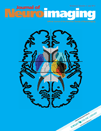Double-Barrel Stent-Assisted Coiling of a Basilar Artery Fenestration Aneurysm
Work performed at Millard Fillmore Gates Circle Hospital (Buffalo, New York).
Sources of funding: none in conjunction with this work.
Financial Relationships/Potential Conflicts of Interest
Dr. Abla, Dr. Dumont, and Dr. Kan report no financial relationships. Dr. Hopkins receives grant/research support from Toshiba and St. Jude Medical; serves as a consultant to Abbott, Boston Scientific,* Cordis, Micrus, and W.L. Gore; holds a financial interest in AccessClosure, Augmenix, Boston Scientific,* Claret Medical Inc., Micrus, and Valor Medical; has a board/trustee/officer position with AccessClosure, Claret Medical Inc., and Micrus (until September, 2010); belongs to the Abbott Vascular speakers’ bureau; and receives honoraria from Bard, Boston Scientific,* Cordis, Memorial Healthcare System, Complete Conference Management, SCAI, and Cleveland Clinic. Dr. Levy receives research grant support (principal investigator: Stent-Assisted Recanalization in acute Ischemic Stroke, SARIS), other research support (devices), and honoraria from Boston Scientific* and research support from Codman & Shurtleff, Inc. and ev3/Covidien Vascular Therapies; has ownership interests in Intratech Medical Ltd. and Mynx/Access Closure; serves as a consultant on the board of Scientific Advisors to Codman & Shurtleff, Inc.; serves as a consultant per project and/or per hour for Codman & Shurtleff, Inc., ev3/Covidien Vascular Therapies, and TheraSyn Sensors, Inc.; and receives fees for carotid stent training from Abbott Vascular and ev3/Covidien Vascular Therapies. Dr. Levy receives no consulting salary arrangements. All consulting is per project and/or per hour. Dr. Siddiqui has received research grants from the National Institutes of Health (co-investigator: NINDS 1R01NS064592–01A1, Hemodynamic induction of pathologic remodeling leading to intracranial aneurysms) and the University at Buffalo (Research Development Award); holds financial interests in Hotspur, Intratech Medical, StimSox, and Valor Medical; serves as a consultant to Codman & Shurtleff, Inc., Concentric Medical, ev3/Covidien Vascular Therapies, GuidePoint Global Consulting, and Penumbra; belongs to the speakers’ bureaus of Codman & Shurtleff, Inc. and Genentech; serves on an advisory board for Codman & Shurtleff; and has received honoraria from American Association of Neurological Surgeons’ courses, Annual Peripheral Angioplasty and All that Jazz Course, an Emergency Medicine Conference, Genentech, Neocure Group LLC, and from Abbott Vascular and Codman & Shurtleff, Inc. for training other neurointerventionists in carotid stenting and for training physicians in endovascular stenting for aneurysms. Dr. Siddiqui receives no consulting salary arrangements. All consulting is per project and/or per hour (*Boston Scientific's neurovascular business has been acquired by Stryker). Dr. Snyder serves as a consultant to, a member of the speakers' bureau, and has received honoraria from Toshiba. He serves as a member of the speakers' bureau for and has received honoraria from ev3 and The Stroke Group (consultants to the health care industry, Littleton CO).
J Neuroimaging 2013;23:496-499.
Abstract
ABSTRACT
BACKGROUND AND PURPOSE
Basilar artery fenestration aneurysms are rare aneurysms, posing unique challenges for endovascular treatment. We report a case of successful treatment of a wide-necked basilar artery fenestration aneurysm with a novel double-barrel stent-assisted coiling technique.
CLINICAL PRESENTATION
A 50-year-old woman presented with headaches. Evaluation revealed an unruptured 7-mm broad-based basilar artery fenestration aneurysm that incorporated both limbs of the basilar fenestration and both distal vertebral arteries.
INTERVENTION
A 4.5 mm × 22 mm Enterprise stent (Codman Neurovascular, Raynham, MA, USA) was deployed from the right limb of the basilar fenestration into the right distal vertebral artery. Similarly, a 2.5 mm × 20 mm Neuroform EZ stent (Boston Scientific, Natick, MA, USA) was placed from the left limb of the basilar fenestration into the left distal vertebral artery. Following stent deployment, the aneurysm was treated with coil-embolization through a jailed microcatheter.
CONCLUSION
In the case presented, a double-barrel stent configuration enabled dense coil embolization of the aneurysm as well as preservation of both basilar fenestration limbs and both distal vertebral arteries.




